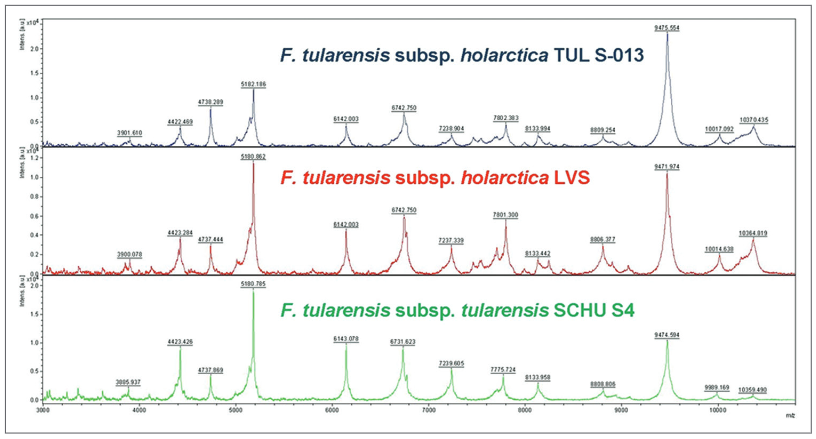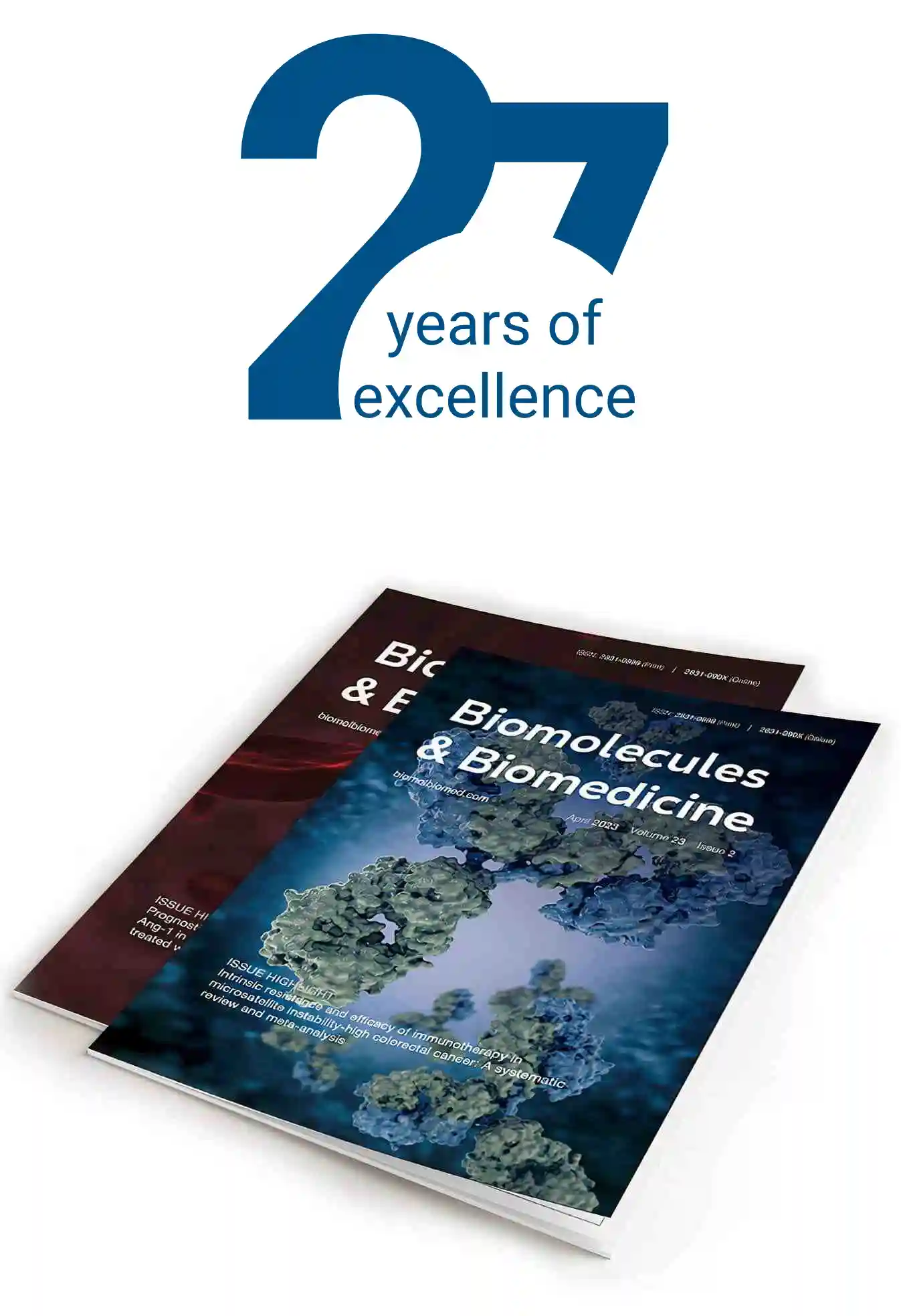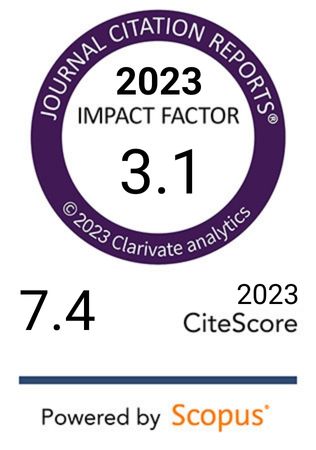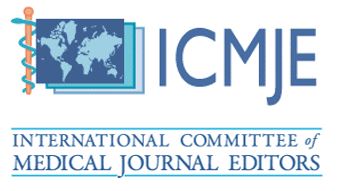The use of Matrix-assisted laser desorption ionization-time of flight mass spectrometry in the identification of Francisella tularensis
DOI:
https://doi.org/10.17305/bjbms.2016.894Keywords:
Francisella tularensis, tularemia, identification, MALDI-TOF MS, PCRAbstract
Francisella tularensis is the cause of the zoonotic disease tularemia and is classified among highly pathogenic bacteria (HPB) due to its low infection dose and potential for airborne transmission. In the case of HBP, there is a pressing need for rapid, accurate and reliable identification. Phenotypic identification of Francisella species is inappropriate for clinical microbiology laboratories because it is time-consuming, hazardous and subject to variable interpretation. Matrix-assisted laser desorption ionization-time of flight mass spectrometry (MALDI-TOF MS) was recently evaluated as a useful tool for the rapid identification of a variety of microorganisms. In this study, we evaluated the use of MALDI-TOF MS for the rapid identification of Francisella tularensis and differentiation of its subspecies. Using national collection of Francisella isolates from the National Tularemia Reference Laboratory (Public Health Institute of Turkey, Ankara), a total of 75 clinical isolates were investigated by species and subspecies-specific polymerase chain reaction (PCR) test and MALDI-TOF MS. All isolates were originally identified as F. tularensis subsp. holarctica due to RD1 subspecies-specific PCR result. For all isolates MALDI-TOF MS provided results in concordance with subspecies-specific PCR analysis. Although PCR-based methods are effective in identifying Francisella species, they are labor-intensive and take longer periods of time to obtain the results when compared with MALDI-TOF MS. MALDI-TOF MS appeared to be a rapid, reliable and cost-effective identification technique for Francisella spp. Shorter analysis time and low cost make this an appealing new option in microbiology laboratories.
Citations
Downloads
References
Gurycova D. Epidemiologic characteristics of tularemia in Slovakia. Bratisl Lek Listy 2006;107(5):224.
World Health Organization (WHO) Epidemic and Pandemic Alert and Response (2007) WHO guidelines on tularaemia. Geneva: WHO. http://www.who.int/csr/resources/publications/WHO_CDS_EPR_2007_7.pdf. Accessed 22 November 2015
Sjöstedt A. Tularemia: history, epidemiology, pathogen physiology, and clinical manifestations. Ann N Y Acad Sci 2007;1105:1–29.
http://dx.doi.org/10.1196/annals.1409.009
Tärnvik A, Chu MC. New approaches to diagnosis and therapy of tularemia. Ann N Y Acad Sci 2007;1105:378–404.
http://dx.doi.org/10.1196/annals.1409.017
Splettstoesser WD, Tomaso H, Al Dahouk S, Neubauer H, Schuff-Werner P. Diagnostic procedures in tularaemia with special focus on molecular and immunological techniques. J Vet Med B Infect Dis Vet Public Health 2005;52:249–261.
http://dx.doi.org/10.1111/j.1439-0450.2005.00863.x
Splettstoesser W, Guglielmo-Viret V, Seibold E, Thullier P. Evaluation of an immunochromatographic test for rapid and reliable serodiagnosis of human tularemia and detection of Francisella tularensis-specific antibodies in sera from different mammalian species. J Clin Microbiol 2010;48(5):1629–1634.
http://dx.doi.org/10.1128/JCM.01475-09
Gürcan Ş. Epidemiology of tularemia. Balkan Med J 2014;31(1):3–10.
http://dx.doi.org/10.5152/balkanmedj.2014.13117
Kılıç S. Tularemia: the pathogen and epidemiology. Turkiye Klinikleri J Inf Dis-Special Topics 2014;7(2):52–61.
Kılıç S, Birdsell DN, Karagöz A, Çelebi B, Bakkaloğlu Z, Arıkan M, et al. Water as source of Francisella tularensis infection in humans, Turkey. Emerg Infect Dis 2015;21(12):2213–2216.
http://dx.doi.org/10.3201/eid2112.150634
Vogler AJ, Birdsell D, Wagner DM, Keim P. An optimized, multiplexed multi-locus variable-number tandem repeat analysis system for genotyping Francisella tularensis. Lett Appl Microbiol 2009;48(1):140–144.
http://dx.doi.org/10.1111/j.1472-765X.2008.02484.x
Seibold E, Maier T, Kostrzewa M, Zeman E, Splettstoesser W. Identification of Francisella tularensis by whole-cell matrix-assisted laser desorption ionization–time of flight mass spectrometry: fast, reliable, robust, and cost-effective differentiation on species and subspecies levels. J Clin Microbiol 2010;48(4):1061–1069.
http://dx.doi.org/10.1128/JCM.01953-09
Sjöstedt A. Francisellae. In; Garrity GB, Don J, Krieg NR, Staley JR (eds). Bergey's Manual of Systematic Bacteriology Volume 2: The Proteobacteria, Part B: The Gammaproteobacteria, 2nd edn. New York: Springer US; 2005, pp. 199–210.
Carbonnelle E, Mesquita C, Bille E, Day N, Dauphin B, Beretti JL, et al. MALDI-TOF mass spectrometry tools for bacterial identification in clinical microbiology laboratory. Clin Biochem 2011;44:104–109.
http://dx.doi.org/10.1016/j.clinbiochem.2010.06.017
Croxatto A, Prod'hom G, Greub G. Applications of MALDI-TOF mass spectrometry in clinical diagnostic microbiology. FEMS Microbiol Rev 2012;36:380–407.
http://dx.doi.org/10.1111/j.1574-6976.2011.00298.x
Seng P, Rolain JM, Fournier PE, La Scola B, Drancourt M, Raoult D. MALDI-TOF-mass spectrometry applications in clinical microbiology. Future Microbiol 2010;5(11):1733–1754.
http://dx.doi.org/10.2217/fmb.10.127
Sjöstedt A, Eriksson U, Berglund L, Tärnvik A. Detection of Francisella tularensis in ulcers of patients with tularemia by PCR. J Clin Microbiol 1997;35(5):1045–1048.
Broekhuijsen M, Larsson P, Johansson A, Byström M, Eriksson U, Larsson E, et al. Genome-wide DNA microarray analysis of Francisella tularensis strains demonstrates extensive genetic conservation within the species but identifies regions that are unique to the highly virulent F. tularensis subsp. tularensis. J Clin Microbiol 2003;41(7):2924–2931.
http://dx.doi.org/10.1128/JCM.41.7.2924-2931.2003
Huber B, Escudero R, Busse HJ, Seibold E, Scholz HC, Anda P, et al. Description of Francisella hispaniensis sp. nov., isolated from human blood, reclassification of Francisella novicida (Larson et al. 1955) Olsufiev et al. 1959 as Francisella tularensis subsp. novicida comb. nov. and emended description of the genus Francisella. Int J Syst Evol Microbiol 2010;60(Pt 8):1887–1896.
http://dx.doi.org/10.1099/ijs.0.015941-0
Mellmann A, Cloud J, Maier T, Keckevoet U, Ramminger I, Iwen P, et al. Evaluation of matrix-assisted laser desorption ionization–time-of-flight mass spectrometry in comparison to 16S rRNA gene sequencing for species identification of nonfermenting bacteria. J Clin Microbiol 2008;46(6):1946–1954.
http://dx.doi.org/10.1128/JCM.00157-08
Kılıç S, Çelebi B, Acar B, Ataş M. In vitro susceptibility of isolates of Francisella tularensis from Turkey. Scand J Infect Dis 2013;45(5):337–341.
http://dx.doi.org/10.3109/00365548.2012.751125
Özsürekci Y, Birdsell DN, Çelik M, Karadağ-Öncel E, Johansson A, Forsman M, et al. Diverse Francisella tularensis strains and oropharyngeal tularemia, Turkey. Emerg Infect Dis 2015;21(1):173–175.
http://dx.doi.org/10.3201/eid2101.141087
Hubálek M, Hernychová L, Brychta M, Lenčo J, Zechovská J, Stulík J. Comparative proteome analysis of cellular proteins extracted from highly virulent Francisella tularensis ssp. tularensis and less virulent F. tularensis ssp. holarctica and F. tularensis ssp. mediaasiatica. Proteomics 2004;4:3048–3060.
http://dx.doi.org/10.1002/pmic.200400939
Durighello E, Bellanger L, Ezan E, Armengaud J. Proteogenomic biomarkers for identification of Francisella species and subspecies by MALDI-TOF mass spectrometry. Anal Chem 2014;86(19):9394–9398.
http://dx.doi.org/10.1021/ac501840g
U.S. Food and Drug Administration. 510(k) Substantial Equivalence Determination Decision Summary for MALDI Biotyper CA System. http://www.accessdata.fda.gov/cdrh_docs/reviews/K130831.pdf. Accessed 18 December 2015
Nonnemann B, Tvede M, Bjarnsholt T. Identification of pathogenic microorganisms directly from positive blood vials by matrix-assisted laser desorption/ionization time of flight mass spectrometry. APMIS 2013;121(9):871–877.
http://dx.doi.org/10.1111/apm.12050
March Roselló GA, Gutiérrez Rodríguez MP, de Lejarazu Leonardo RO, Ordu-a Domingo A, Bratos Pérez MA. Procedure for microbial identification based on matrix-assisted laser desorption/ionization-time of flight mass spectrometry from screening-positive urine samples. APMIS 2014;122(9):790–795.
http://dx.doi.org/10.1111/apm.12208
Çelebi B, Kılıç S, Yeşilyurt M, Acar B. Evaluation of a newly-developed ready-to-use commercial PCR kit for the molecular diagnosis of Francisella tularensis. Mikrobiyol Bul 2014;48(1):135–142.
Lasch P, Wahab T, Weil S, Pályi B, Tomaso H, Zange S, et al. Identification of highly pathogenic microorganisms by matrix-assisted laser desorption ionization-time of flight mass spectrometry: results of an interlaboratory ring trial. J Clin Microbiol 2015;53(8):2632–2640.

Downloads
Additional Files
Published
Issue
Section
Categories
License
Copyright (c) 2016 Bosnian Journal of Basic Medical Sciences

This work is licensed under a Creative Commons Attribution 4.0 International License.
How to Cite
Accepted 2015-12-21
Published 2016-01-15









